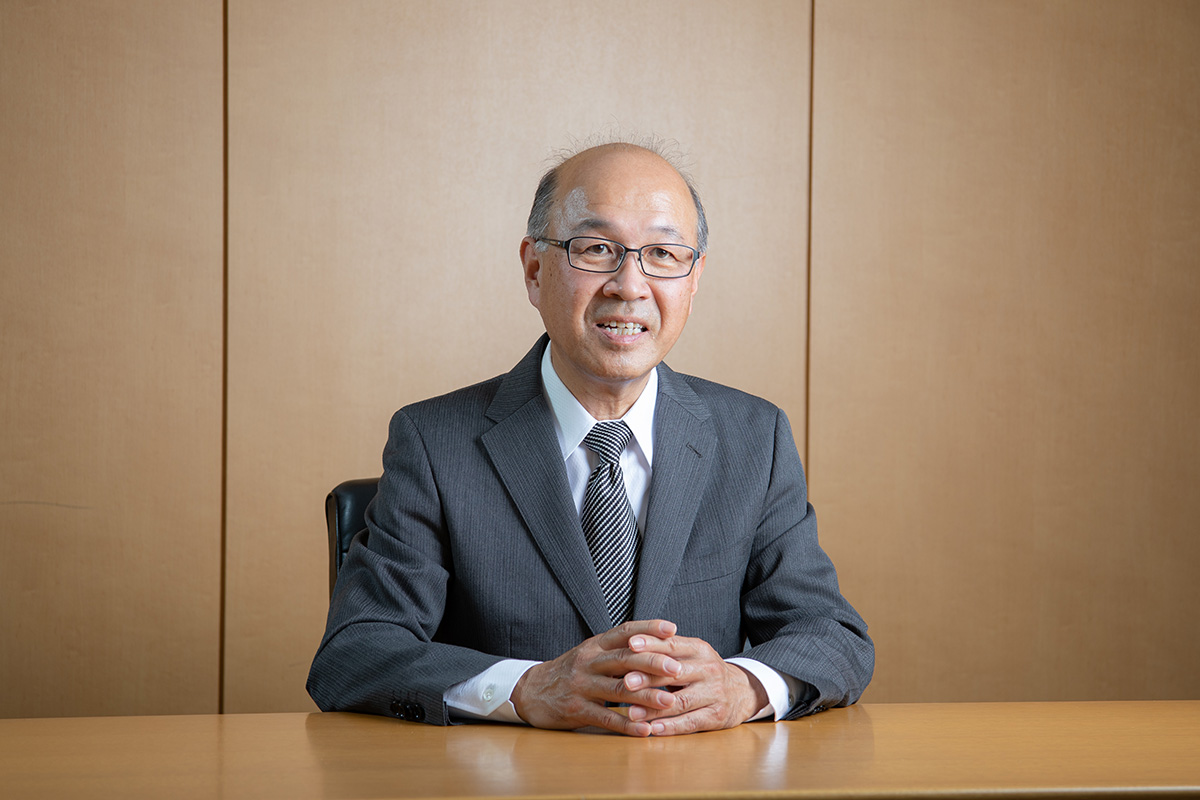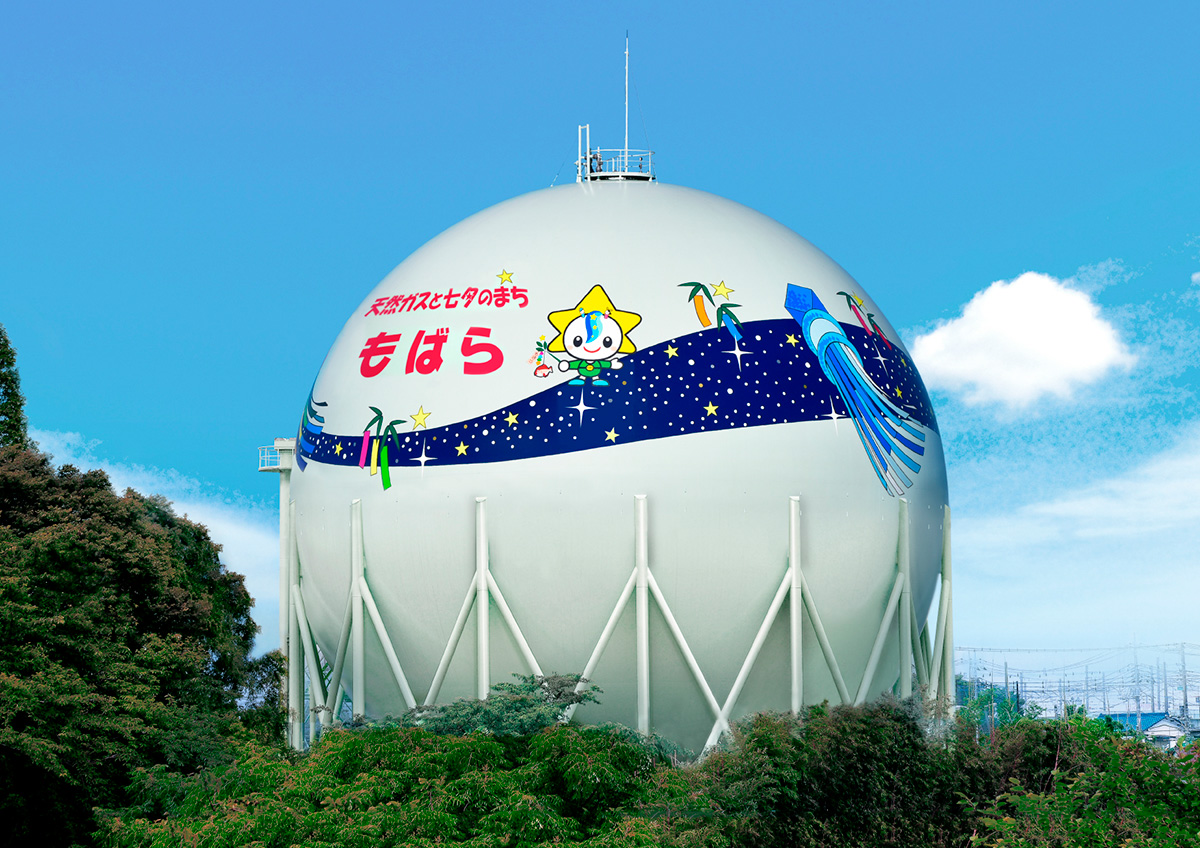We sat down with K&O to discuss the role of natural gas in the transition to a decarbonized society.

Japan is facing unique four-fold challenges, from a lack of domestic resources and high energy costs to a high dependency on imports. How do you believe Japan can lessen its energy dependence?
To be very honest, as the provider of energy sources, we account for only a very minimal percentage of the primary energy provision in Japan, so we do not have a holistic vision of how Japan should become independent on energy. We agree with the government's sixth energy plan, which is the direction Japan should take. My prospect until 2030 is for Japan to commence the operation of the existing nuclear plant that was halted and increase the percentage of renewable energy at the same time. The use of coal may diminish, but the use of natural gas may be maintained.
Japan has shifted out of its dependence on the Middle East's crude oil, and its share of that has been transferred to natural gas. Our reliance on the Middle East has lessened, but LNG production is now centered in the US. A similar situation may happen in which we become dependent on one single area for import, leading to high energy costs. Renewable energy is the countermeasure to reduce greenhouse gas. However, in terms of one generation, there is a very small area in Japan that is applicable, and it is not like the northern sea area which has shallow waters with a long coastal line. We are looking at geothermal wells as an alternative energy source through WELMA, our subsidiary.
Japan has one of the largest geothermal reserves in the world, behind Indonesia and the US. Because it is known to be volcanic land, you do not need to dig that deep to harness geothermal energy. However, the share of geothermal's contribution to Japan's energy mix is very little, and there are not many projects to increase it. Why do you think that such an energy source which has so much potential in Japan is currently being so underutilized?
I believe that there are three main reasons why Japan is not progressing in geothermal energy development. First, the volcanic activities where geothermal energy could be harnessed are in the steep mountainside, not on flat land. The location is very difficult to access. Second, the Japanese government has also imposed a strict natural reserve protection law. Third, local onsens have been a long-standing culture for Japan, so there is a strong inclination to protect them. Hence, projects are particularly challenging to push forward.
The importance of renewables is for a clean energy society. Your core method of gas extraction comes in part from brine, which contains ammonium. You have been conducting some research activities in treatment technologies for removing ammonium from waste brine to make this a more sustainable process, like your collaboration with Kumamoto University. Could you tell us more about the focus of your research on making your brine extraction more environmentally conscious? How are you implementing those results?
We extract natural gas from the natural gas brine, and this water contains ammonium as nitrogen derived from decomposed fossils. Since nitrogen causes eutrophication followed by environmental pollusion, there is a stricter restriction by law for nitrogen-containing wastewater discharged to the natural environment, especially in enclosed water bodies in Japan, like Tokyo Bay. Therefore, we need to take careful steps in developing technology to treat waste brine containing ammonium.
As one of the measures, we conducted a lab-scale treatment test of waste brine with Kumamoto University, where we obtained and cultured a microorganism, anammox bacteria, to remove ammonium from waste brine as a nitrogen gas. In fact, a similar type of method is used in Kumamoto’s sewage treatment plant to remove ammonium as a nitrogen gas, but they use a “freshwater” anammox bacteria in tolerant to salinity. Because we extract brine, which is ancient seawater, the microorganism Kumamoto is using is not compatible. On the other hand, we cultured “marine” anammox bacteria highly tolerant to seawater, which is proving to be very successful in the pilot project phase. As soon as we can consolidate this technology, we will be able to start extracting natural gas in Chiba and in the inland sea closer to Tokyo Bay.
Although it is still in the pilot program phase, do you have any idea when we will be seeing some practical applications of the anammox bacteria?
We are hoping in five or 10 years.
There are different types of natural gas as an alternative, like LP gas, and there is also the possibility for companies to import natural gas from overseas. What would you say are the competitive advantages of the natural gas that you produce here on a commercial level and on an environmental level? How does it compare in terms of carbon dioxide emissions?
The natural gas extracted in Chiba is unique because it consists of almost 100% methane, with no other substance like propane. It is a highly efficient natural gas. Imported LNG involves the liquefication process, and its transportation adds to the carbon footprint. In addition, when converting to LNG overseas, natural gas often needs to remove its sulfur content, but that process is not required for the Chiba-extracted natural gas. In terms of life cycle inventory, carbon dioxide emission is much lower when it is procured domestically than when imported overseas.

Within brine in other words the ancient seawater, the underground brine in Chiba contains not only natural gas but also iodine, which are two different natural resources.
We are very interested in how iodine has developed as a second pillar of your business. Interestingly, just in the last few years, the price of iodine has risen by nearly USD 10 per kilogram. What do you believe to be the key reasons for this increase in price? What impact does this have on your company, and what strategy are you employing to benefit or address this shifting market?
The price of iodine has been gradually increasing for the past few years. The major producers of iodine are Japan and Chile. Japan has a very stable production of iodine. However, Chile’s production varies because they sometimes do mass production, and the overall price of iodine fluctuates according to the balance between supply and demand. Thus, there is high volatility within this iodine market. This has also been further impacted by the currency exchange rate. In fact, with the hike in the iodine price and the depreciation of the Japanese yen, we export the majority of our iodine products overseas. For the year 2022, we had a considerable addition to our sales, while the material and production costs somewhat stayed the same. Nevertheless, due to the volatility in the market and being unable to foresee the currency exchange rate, we are carefully analyzing the situation.
Natural gas extraction typically takes place in very flat terrain. One of the main challenges or environmental concerns that comes from this kind of terrain is the risk of ground subsidence as a result of the extraction process. I would like to know more about your company’s policies or strategy to get around this problem and be able to safely & efficiently extract the gas without damaging or causing the land to sink.
We inject the water underground and do a fine measurement & monitoring so that we can control the substantial settlement. There is always the issue of subsidence whenever water is extracted from the ground for either gas extraction or industrial use. We are working with the government to do prototype testing to verify the effectiveness of the subsidence mitigation method that is considered more efficient.
Do you have any interest in acquiring or linking up with overseas energy companies or academic institutions for research and development or conducting overseas business projects?
We have a group company in the US called KNG AMERICA, and the headquarters is in Utah. We do exploitation of oil and gas in Texas and New Mexico. Moreover, The water-flooding methods is applied there. This is a method of increasing production by injecting water into the reservoir during oil extraction to drive out the oil, and has affinities with the brine injection technology we are implementing in Japan. In our US base, we already have a long-standing partnership with a consulting firm and operating companies. Our US business is centered around KNG AMERICA.
For our group company K&O Iodine, we have a partnership with the Toyota Tsusho trading firm, which has an iodine factory in America. We hope to collaborate with them if there is an opportunity.
SQM is a massive company, so we do not envision having a partnership with them. Currently, they are doing very well with lithium-ion batteries. As long as they focus on that field, we can maintain our business and the price of iodine.
Could you tell us more about your vision to develop your international business? Is it a matter of strengthening that network in the United States, or are there any other markets or countries in which you are interested in replicating the success you have there?
For our iodine business, we are looking at a collaboration with Toyota Tsusho in strengthening our global business. This is still in the research phase, but we are conducting small-scale research in Southeast Asia where iodine can be extracted. As for carbon-neutral measures, we want to utilize forestry as one of the business schemes.
Are you looking for opportunities to acquire new companies such as WELMA as part of your effort to diversify in the energy business?
We are not thinking of acquiring or merging with other companies, but we are concentrating more on partnerships. WELMA's business is confined to the drilling of geothermal wells. We are partnering with geothermal power generation companies in Kurikoma, Miyagi Prefecture for geothermal power generation, and we hope to create a similar project across Japan.
Imagine we come back in five years to interview you all over again. Is there a goal or an ambition that you would like to have achieved by then that you would to tell us in that new interview?
The vision I have is for our group companies' conversion and growth into a total energy supplier. The focus of Kanto Natural Gas Development is on gas extraction, provision and sales, but we want to widen that out into a holistic energy provision, including solar, wind, geothermal and renewable energy sources. Similarly, we want Otaki Gas to become a total energy provider.
Customers are not looking for energy itself - gas, electricity or renewable energy - but for the value of energy (comfortable heating, relaxing baths, delicious cooking, etc.). We want to provide these energy values to our customers. We want to evolve Kanto Natural Gas Development, Otaki Gas and other group companies to be a holistic or total energy provider.
0 COMMENTS